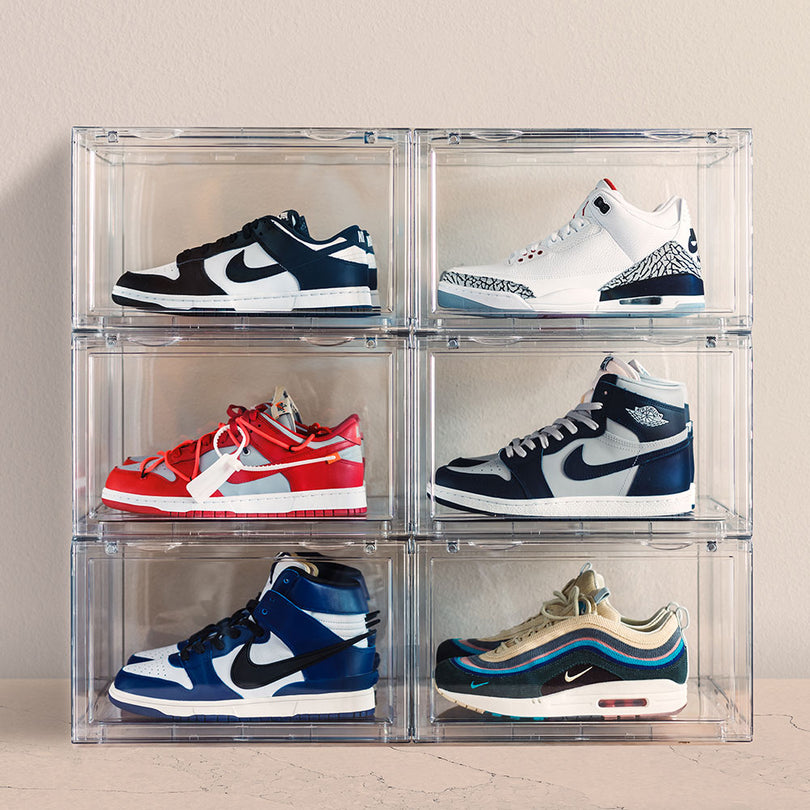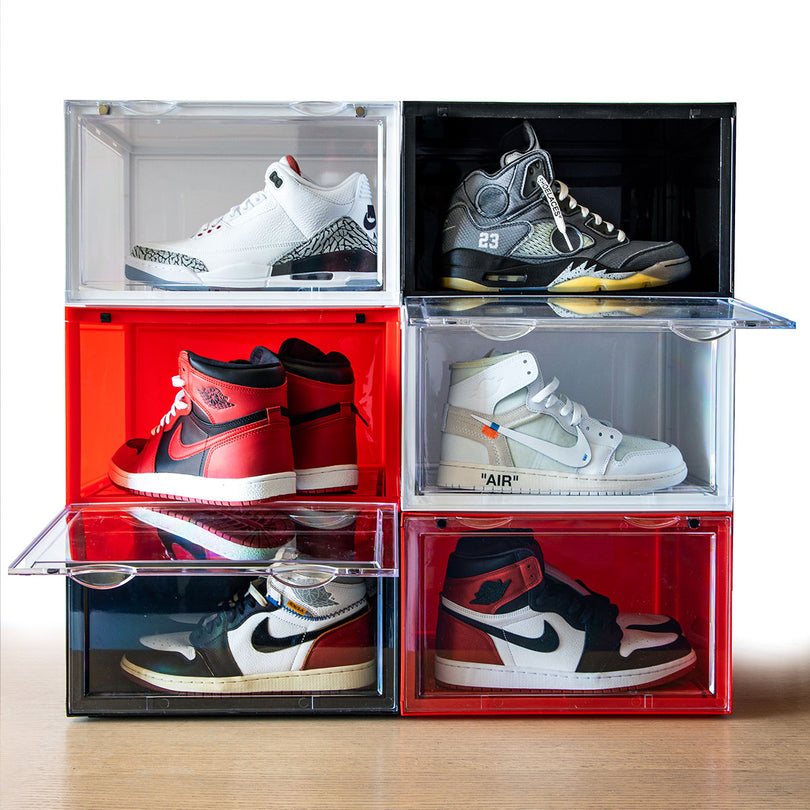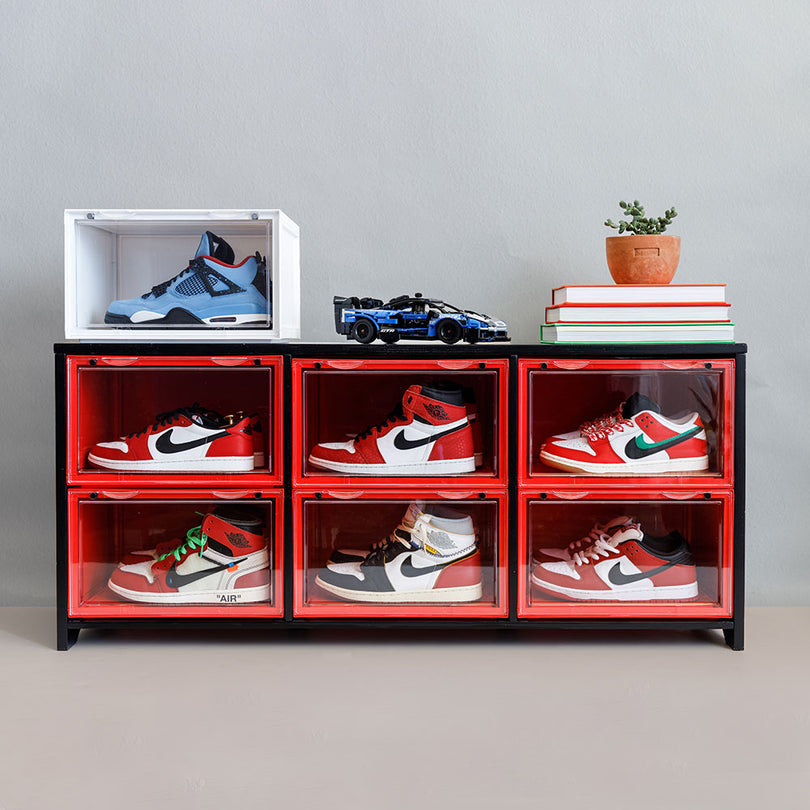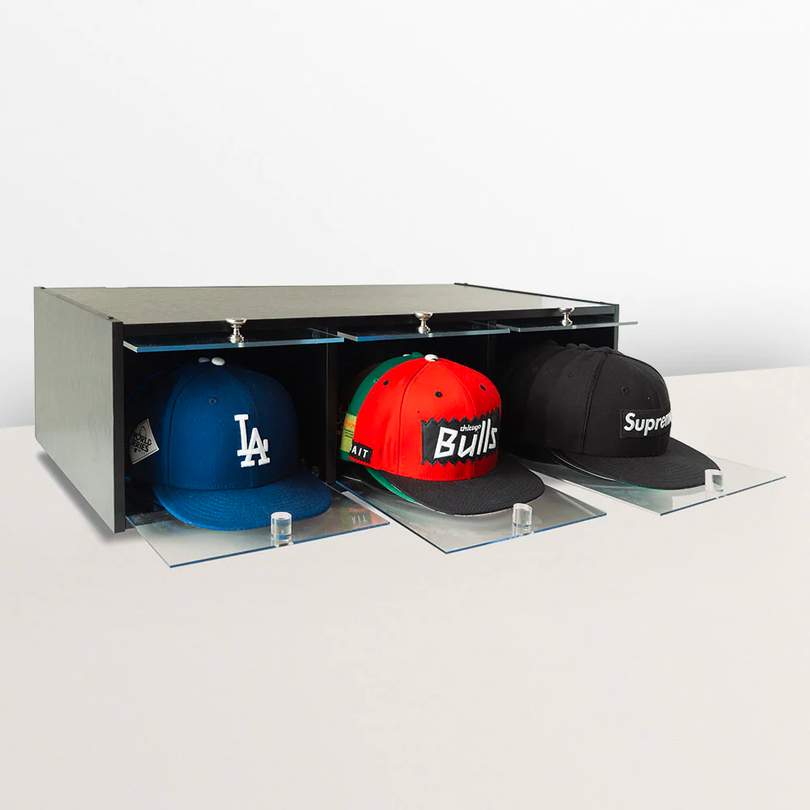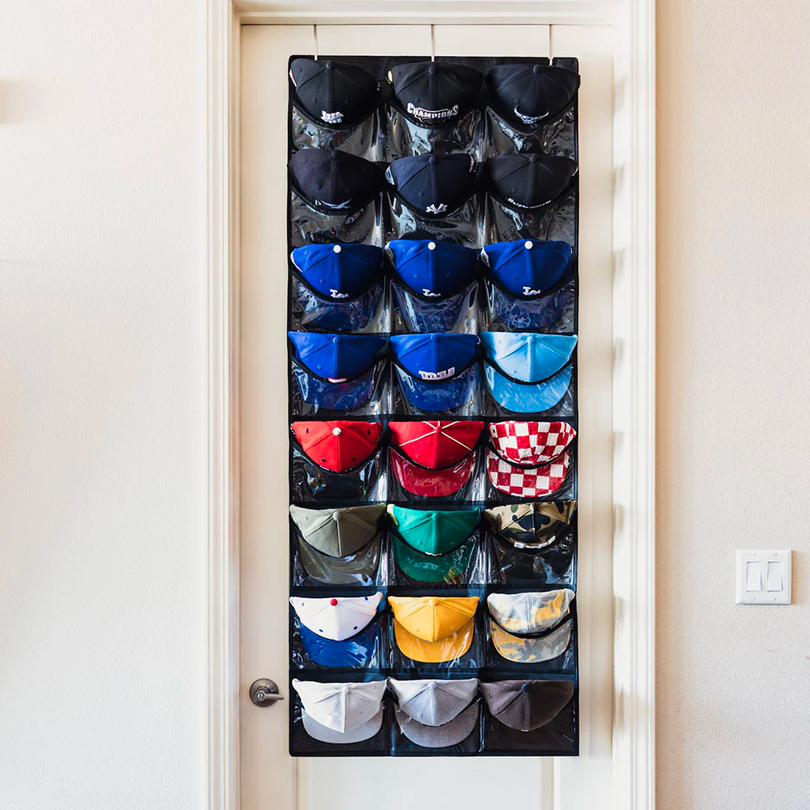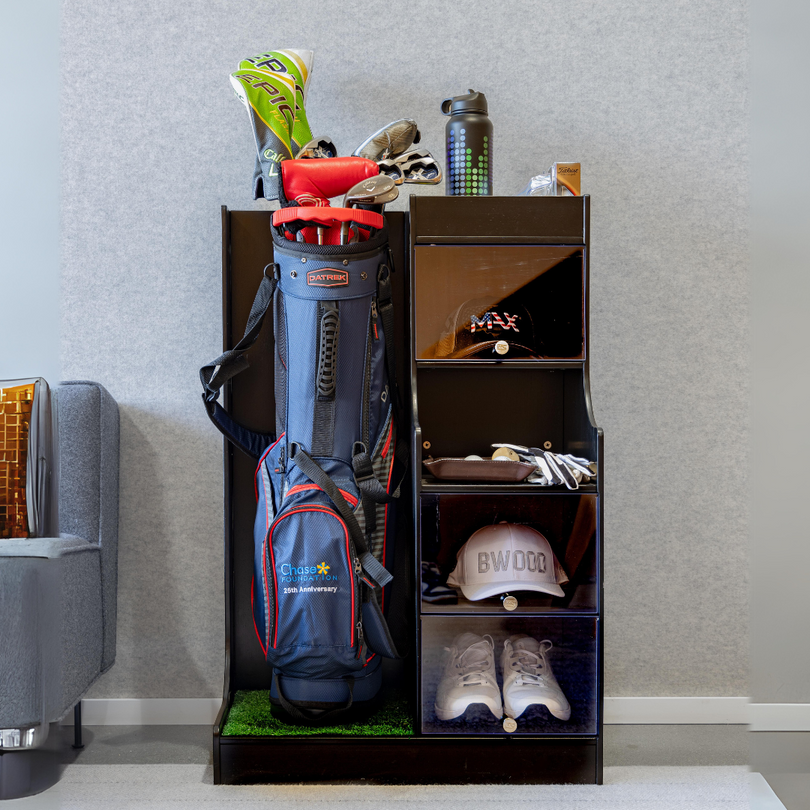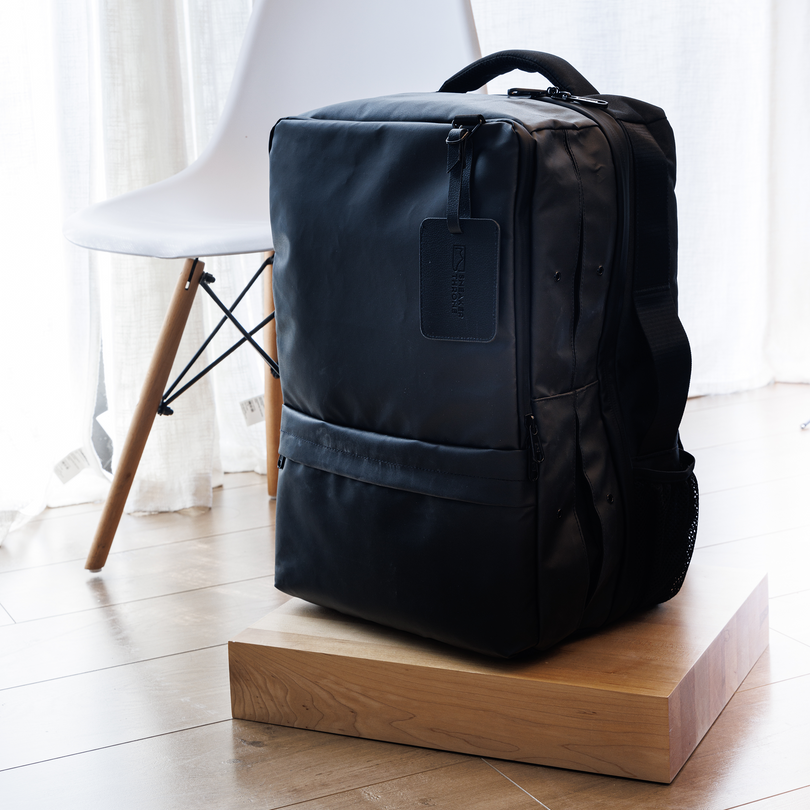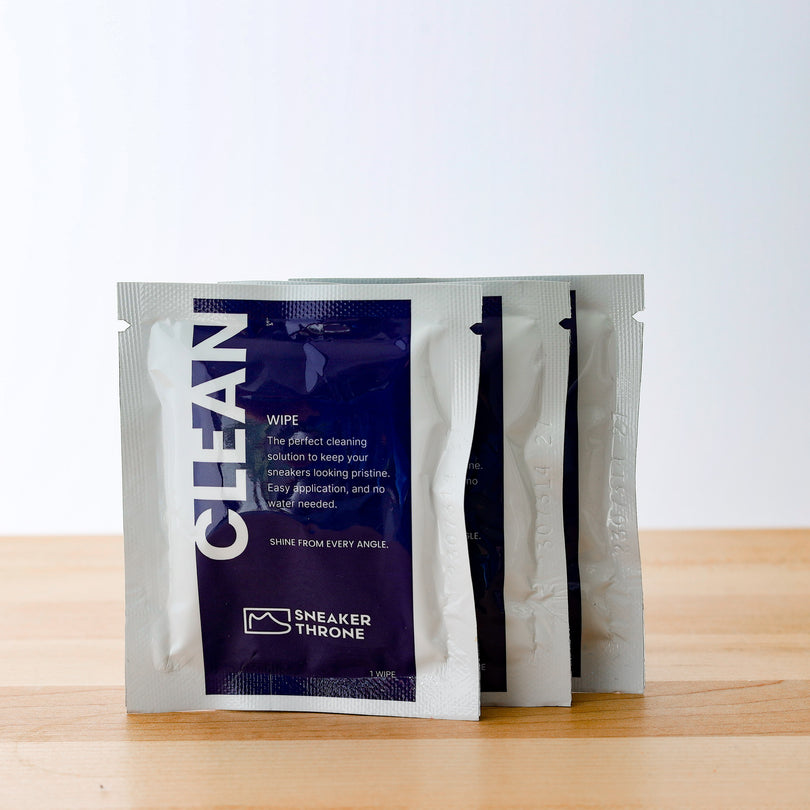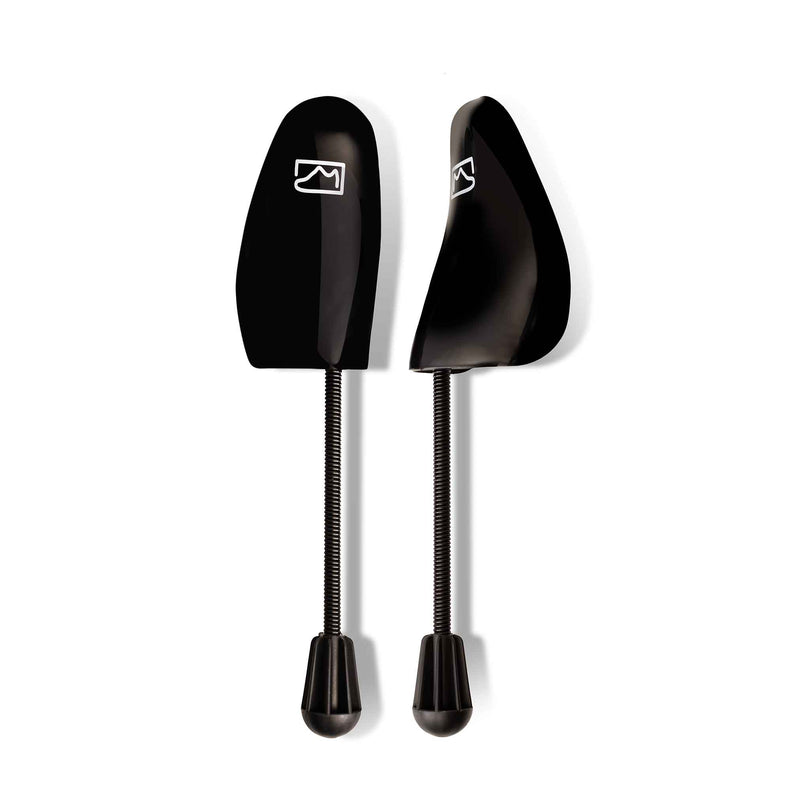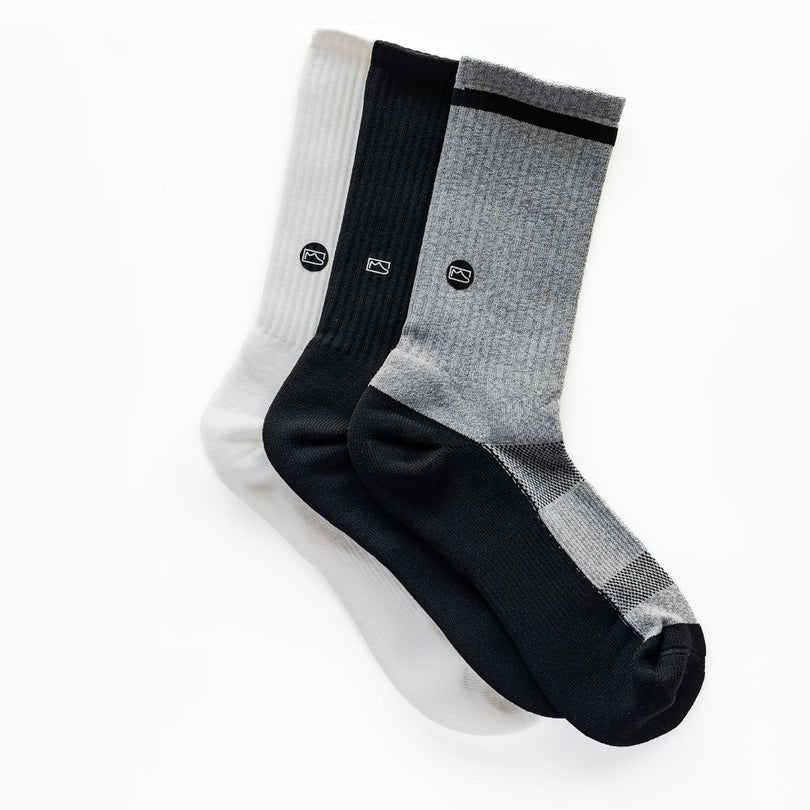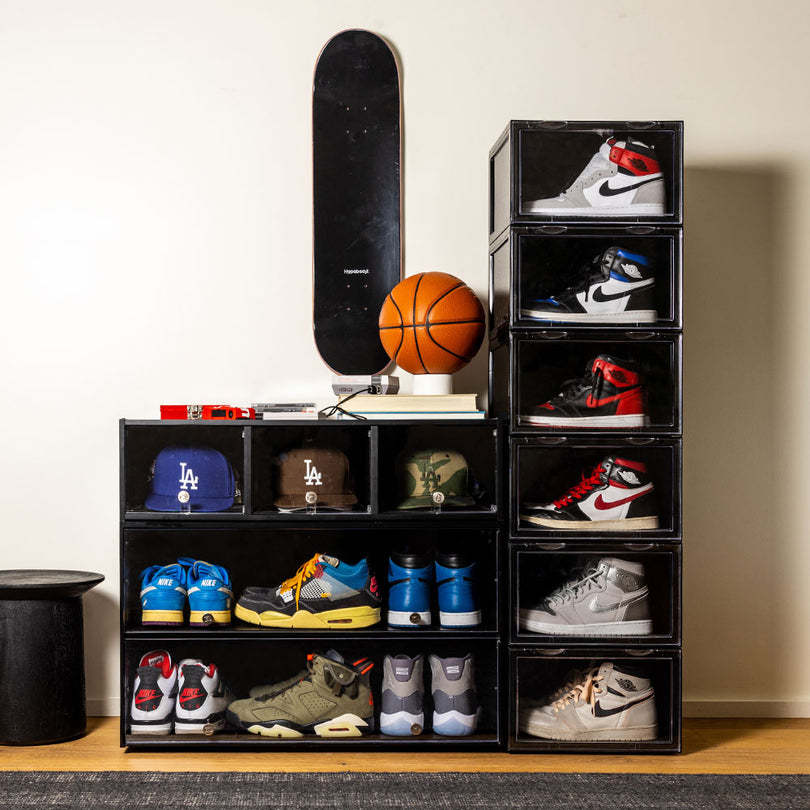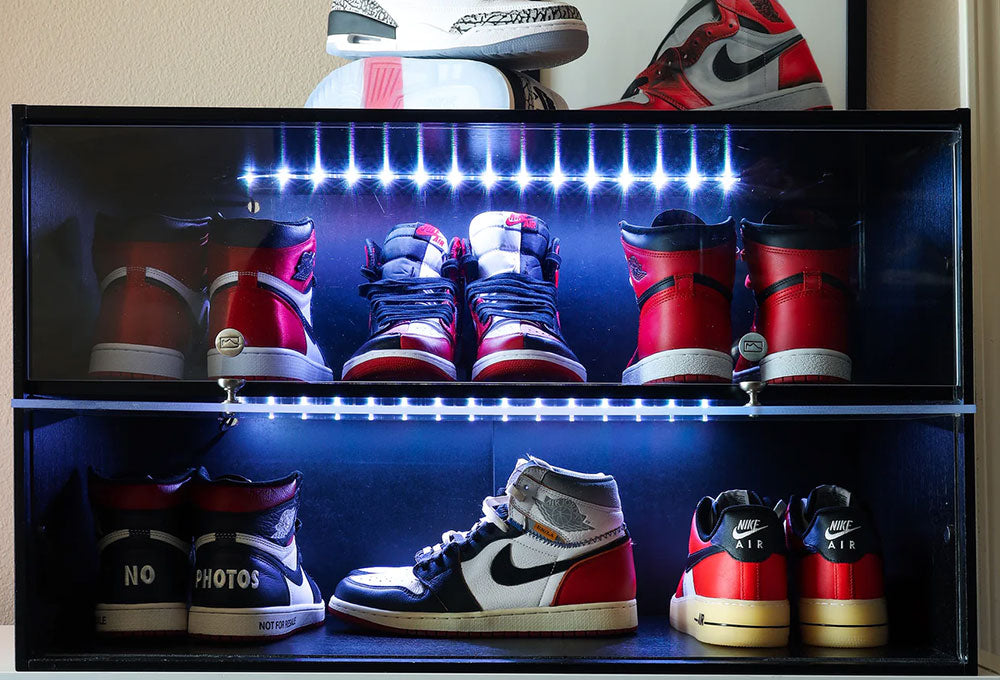Introduction
Welcome to the ultimate guide on hat storage! If you're a hat enthusiast or simply someone who values their collection of stylish headgear, you've come to the right place. Hats not only serve as fashion statements but also protect us from the sun, add flair to our outfits, and express our personal style. However, improper hat storage can lead to damage, misshaping, or even the loss of cherished hats.
In this comprehensive blog post, we will delve into the world of hat storage, exploring different types of hats and their specific storage needs. We will discuss best practices for hat storage, including cleaning tips, organizing methods, and ways to protect your hats from dust and sunlight. Additionally, we will explore creative and alternative hat storage ideas that will not only preserve your hats but also showcase them as stunning displays.
Maintaining hat quality and longevity is crucial, and we will provide you with valuable insights on how to handle hats with care, revive crushed or misshapen hats, and know when it's time to replace them. By the end of this guide, you'll have all the knowledge and tools necessary to keep your hats in top-notch condition and make them last for years to come.
So, whether you're a hat collector, a fashion enthusiast, or someone looking for practical storage solutions, let's dive into the world of hat storage and discover the secrets to preserving and showcasing your favorite headpieces like a true connoisseur. Let's get started!
Importance of Proper Hat Storage
Proper hat storage is not just a matter of tidiness; it is essential for preserving the quality, shape, and longevity of your hats. Whether you have a collection of baseball caps, sun hats, winter hats, or a combination of various hat styles, understanding the importance of proper hat storage will help you maintain their original beauty and functionality.
One of the primary reasons why proper hat storage is crucial is to prevent damage. Hats are susceptible to wear and tear, and mishandling or incorrect storage can lead to misshapen brims, crushed crowns, or stretched-out materials. By implementing the right storage techniques, you can avoid these issues and ensure that your hats remain in pristine condition.
Moreover, proper hat storage is essential for organizing your collection. If you've ever spent countless minutes searching for a specific hat buried under a pile of others, you'll appreciate the value of an organized storage system. By storing your hats in an organized manner, you can easily find the hat you want to wear and avoid the frustration of a messy hat collection.
Another reason to prioritize proper hat storage is to protect your hats from dust, dirt, and sunlight. Over time, exposure to these elements can cause fading, discoloration, and deterioration of materials, especially for hats made from delicate fabrics or natural fibers. By storing your hats in a way that shields them from these harmful factors, you can extend their lifespan and retain their original vibrancy.
Lastly, proper hat storage allows you to showcase your collection with pride. Hats are not just functional accessories; they can also be works of art that reflect your personal style and individuality. By storing your hats in a visually appealing and organized manner, you can transform your collection into a stunning display that adds character to your living space or dressing area.
In the following sections, we will explore the specific storage needs of different types of hats, discuss best practices for hat storage, explore creative storage ideas, and provide tips for maintaining hat quality and longevity. So, let's dive deeper into the world of hat storage and discover the secrets to keeping your hats in top-notch condition!
Types of Hats and Their Specific Storage Needs
Hats come in various styles, materials, and shapes, and each type requires specific storage methods to ensure their longevity and preservation. In this section, we will explore the common types of hats and discuss their specific storage needs, including baseball caps, sun hats, straw hats, winter hats, and beanies.
Baseball Caps
Baseball caps are a staple in many wardrobes, providing both style and protection from the sun. To properly store baseball caps, there are a few options to consider.
One effective method is to use a hat rack specifically designed for baseball caps. These racks often feature hooks or clips that hold the caps in place, preventing them from losing their shape. Hanging your baseball caps on a hat rack not only keeps them organized but also allows for easy access when you want to grab one on the go.
Another option for storing baseball caps is using hat boxes. These boxes provide a protective environment for your caps, shielding them from dust and potential damage. Look for hat boxes specifically designed for baseball caps, as they are usually structured in a way that accommodates the shape and size of caps.
If space is limited, you can hang your baseball caps on hooks or pegs. Install hooks or pegs on a wall or the back of a door, and hang your caps by their adjustable strap at the back. This method keeps the caps visible and easily accessible while saving precious storage space.
Sun Hats and Straw Hats
Sun hats and straw hats are perfect for shielding your face from the sun's rays while adding a touch of elegance to your outfit. When it comes to storing these types of hats, there are a few key considerations.
For sun hats, it is ideal to store them on a hat organizer or shelf. Look for organizers designed specifically for sun hats, as they often have wide brim supports that help maintain the hat's shape. Place your sun hats on the organizer or shelf, ensuring they are not squished or bent to preserve their brims and overall structure.
Straw hats, on the other hand, require extra care due to their delicate nature. Storing straw hats in hat boxes is highly recommended. Look for boxes that provide ample space for the brim and crown, allowing the hat to sit comfortably without being squashed. Additionally, it's important to protect straw hats from humidity and mold. Store them in a cool and dry environment, away from direct sunlight and excessive moisture.
In the next section, we will discuss best practices for hat storage, including cleaning tips, organizing methods, and ways to protect your hats from dust and sunlight. So, let's continue our journey into the world of hat storage!
Best Practices for Hat Storage
Proper hat storage goes beyond simply finding a designated spot for your hats. To ensure their longevity and keep them in pristine condition, it's important to follow best practices for hat storage. In this section, we will explore cleaning tips, organizing methods, and ways to protect your hats from dust and sunlight.
Cleaning Hats Before Storage
Before stowing your hats away for the season or when not in use, it's essential to clean them properly. The cleaning method will depend on the material and construction of the hat. Let's explore some cleaning tips for different types of hats:
Spot Cleaning vs. Dry Cleaning
For hats made from materials such as cotton, polyester, or wool, spot cleaning is often sufficient. Use a mild detergent or stain remover and a soft cloth or sponge to gently remove any stains or dirt. Be sure to follow the instructions on the cleaning product and test it on a small, inconspicuous area of the hat first.
For more delicate or structured hats, such as those made from silk, satin, or adorned with intricate embellishments, it's best to seek professional dry cleaning services. They have the expertise to handle these hats with care and ensure they are cleaned without any damage.
Washing Hats in the Washing Machine
Some hats, such as baseball caps or hats made from durable materials like cotton or polyester, can be safely washed in the machine. To do this, place the hat in a protective hat cage or use a hat-specific washing device to maintain its shape during the wash cycle. Use a gentle cycle with cold water and a mild detergent. Avoid using bleach or harsh chemicals that could damage the hat's fabric or color.
Drying Hats Properly
After cleaning, it's crucial to dry your hats properly to prevent them from losing their shape or developing mold. Avoid using a dryer, as the heat and tumbling motion can warp the hat or cause shrinkage. Instead, reshape the hat if necessary and allow it to air dry naturally. Place the hat on a clean towel or use a hat drying rack designed to support the hat's structure.
Sorting and Organizing Hats
Once your hats are clean and dry, it's time to organize them. Sorting and organizing your hats not only helps you find the perfect hat for any occasion but also prevents damage from mishandling or overcrowding. Here are some tips for sorting and organizing hats effectively:
Categorizing Hats by Style, Color, or Season
Consider categorizing your hats by style, color, or season. This way, you can easily locate the specific hat you need without rummaging through a jumble of hats. Grouping hats by style allows you to quickly find the perfect hat to complement your outfit, while organizing them by color creates an aesthetically pleasing display. Sorting hats by season can be particularly helpful if you have a large collection, as it allows you to rotate hats based on the weather or occasion.
Using Hat Dividers or Labels
To maintain an organized hat collection, utilize hat dividers or labels. Hat dividers can be placed on shelves or in drawers, creating separate compartments for each hat. This prevents hats from getting squashed or losing their shape. Alternatively, you can use labels to mark different sections or boxes, making it easy to identify the type or style of each hat.
Maximizing Closet or Shelf Space
If space is limited, it's important to maximize the storage area for your hats. Consider using vertical space by installing hooks or hanging racks on the walls or inside the closet door. This allows you to hang hats without taking up valuable shelf or floor space. Additionally, collapsible hat organizers or stackable hat storage boxes can help optimize storage in small closets or drawers.
In the next section, we will discuss how to protect your hats from dust and sunlight, ensuring their longevity and vibrant appearance. So, let's continue our exploration of hat storage best practices!
Protecting Hats from Dust and Sunlight
Dust and sunlight can be detrimental to the appearance and quality of your hats. Dust particles can accumulate on the surface of hats, making them look dull and potentially causing allergies or irritations when worn. Sunlight, particularly its ultraviolet (UV) rays, can fade colors, weaken materials, and cause fabric deterioration. To protect your hats from these elements, here are some essential tips:
Using Hat Dust Covers or Bags
One effective way to shield your hats from dust is by using hat dust covers or bags. These protective covers are typically made from breathable materials that allow air circulation while keeping dust particles at bay. Hat dust covers come in various sizes and shapes to accommodate different hat styles and sizes. Simply place your hats inside the covers before storing them, ensuring they are fully enclosed to prevent dust from settling on the surface.
If you don't have hat dust covers, you can also use pillowcases or clean fabric bags as alternatives. Just make sure the material is clean and breathable to prevent moisture buildup.
Avoiding Exposure to Direct Sunlight
Direct sunlight can cause irreversible damage to your hats, especially those made from natural fibers or delicate materials. UV rays can fade colors, weaken fibers, and cause materials to become brittle over time. To protect your hats from sunlight, follow these guidelines:
- Store your hats in a cool, dark place away from direct sunlight. A closet or a storage area with minimal exposure to natural light is ideal.
- If you have a hat display area near a window, consider using UV-blocking window film or curtains to reduce the amount of sunlight reaching your hats.
- When wearing hats outdoors, try to find shaded areas or wear a wide-brimmed hat that provides additional protection from the sun.
Using Hat Brim Shapers or Supports
To maintain the shape of your hats, particularly those with wide brims, consider using hat brim shapers or supports. These accessories are designed to preserve the shape and structure of the brim, preventing it from becoming misshapen or floppy over time. Hat brim shapers can be made of plastic or foam and are inserted into the brim of the hat, providing support and maintaining its intended silhouette. This is particularly useful for sun hats, straw hats, and wide-brimmed hats that are prone to losing their shape when stored flat.
By implementing these protective measures, you can ensure that your hats remain in excellent condition, free from dust accumulation and the damaging effects of sunlight.
In the next section, we will explore creative and alternative hat storage ideas, including DIY solutions and unique hat display methods. So, let's continue our journey into the world of hat storage!
Creative and Alternative Hat Storage Ideas
Are you looking for unique and creative ways to store and display your hat collection? In this section, we will explore DIY hat storage solutions, unique hat display methods, and travel-friendly options. Get ready to showcase your hats in style!
DIY Hat Storage Solutions
If you enjoy DIY projects, there are plenty of creative ways to store your hats using materials you may already have at home. Let's explore some DIY hat storage solutions:
Hat Pegboards or Wall Grids
Pegboards or wall grids are versatile storage options that can be customized to fit your hat collection. Install a pegboard or wall grid on a blank wall and attach hooks or pegs. Hang your hats on the hooks or pegs, arranging them in a visually appealing pattern. This not only provides an organized storage solution but also serves as a decorative element in your space.
Hat Hanging Clips or Strips
Another simple and cost-effective DIY solution is using hat hanging clips or strips. These can be purchased or easily made using adhesive hooks or clips. Attach the hooks or clips to a wall, cabinet, or closet door, and hang your hats by their adjustable straps. This method keeps your hats visible and accessible while saving space.
Hat Storage Boxes Made from Cardboard
If you're feeling crafty, you can create your own hat storage boxes using cardboard. Cut out pieces of cardboard to form the base, sides, and lid of the box. Secure the pieces together with strong adhesive or tape, and decorate the box to your liking. This DIY option allows you to customize the size and design of the boxes to fit your hats perfectly.
Unique Hat Display Methods
If you want to showcase your hat collection as a statement piece in your home, consider these unique hat display methods:
Hat Walls or Hat Trees
Create a stunning focal point by dedicating a wall or a corner of your room to a hat display. Install hooks or pegs on the wall, or use a freestanding hat tree to hang your hats. Arrange your hats in a visually pleasing pattern, mixing different styles and colors for an eye-catching display. This not only keeps your hats organized but also adds a touch of personality to your space.
Hat Stands or Mannequin Heads
Display your favorite hats on hat stands or mannequin heads for an elegant and sophisticated look. Hat stands are available in various materials, such as wood or metal, and come in different heights and designs. Mannequin heads provide a realistic representation of how the hat will look when worn. Choose a stand or head that complements your hat collection and place it on a dresser, shelf, or vanity for a classy display.
Hat Frames or Shadow Boxes
For a more artistic and decorative approach, consider using hat frames or shadow boxes. These frames have a recessed area or compartments where you can showcase your hats like pieces of art. Choose frames or boxes that fit the size of your hats, and mount them on the wall or display them on a shelf. This unique display method adds a touch of elegance and sophistication to your space.
Travel-Friendly Hat Storage
If you're an avid traveler or need to pack your hats for a trip, consider these travel-friendly hat storage options:
Foldable or Crushable Hat Options
Opt for hats made from flexible materials that can be folded or crushed without losing their shape. Look for hats specifically designed for travel, such as packable sun hats or crushable fedoras. These hats can be easily folded or packed in a suitcase, making them convenient for travel without sacrificing style.
Hat Carriers or Travel Cases
Invest in hat carriers or travel cases designed to protect your hats during transportation. These cases are usually made from durable materials and provide a secure and cushioned environment for your hats. Some cases even have adjustable straps or compartments to hold multiple hats. This ensures that your hats arrive at your destination intact and ready to be worn.
Packing Hats in Luggage Tips
If you prefer to pack your hats in your regular luggage, there are a few tips to keep in mind. Stuff the crown of the hat with soft items, such as socks or underwear, to help maintain its shape. Place the hat upside down in your suitcase, with the brim facing the bottom. Surround the hat with clothing or other soft items to provide extra protection. Avoid placing heavy objects on top of the hat to prevent crushing.
By exploring these creative and alternative hat storage ideas, you can find a solution that suits your personal style and space. Whether you prefer DIY projects, unique displays, or travel-friendly options, there are plenty of ways to store and showcase your hat collection.
In the next section, we will discuss how to maintain hat quality and longevity, including tips for handling hats with care, reviving crushed or misshapen hats, and knowing when it's time to replace them. So, let's continue our exploration of hat storage best practices!
Maintaining Hat Quality and Longevity
To ensure that your hats remain in excellent condition and last for years, it's important to handle them with care, know how to revive crushed or misshapen hats, and recognize when it's time to replace them. In this section, we will explore valuable tips and techniques for maintaining hat quality and longevity.
Handling Hats with Care
When it comes to hats, gentle handling is key to preserving their shape and preventing damage. Here are some tips for handling your hats with care:
Avoiding Excessive Handling or Bending
Try to minimize excessive handling or bending of your hats, as this can cause misshaping or stretching. When you pick up or put on a hat, use both hands and handle it by the brim or crown to distribute the weight evenly. Avoid gripping the hat tightly or pinching it, as this can leave visible marks or distort the shape.
Cleaning and Removing Stains Promptly
Promptly clean your hats if they become soiled or stained, as dirt or stains left untreated can become more difficult to remove over time. Follow the cleaning tips mentioned earlier in this guide for specific hat materials. Remember to use gentle cleaning methods and avoid abrasive materials or harsh chemicals that can damage the hat's fabric or structure.
Storing Hats in a Cool and Dry Environment
After wearing your hats, always store them in a cool and dry environment. Excess heat or moisture can lead to mold growth, fabric deterioration, or the weakening of hat structures. Avoid storing hats in areas prone to high humidity, such as basements or bathrooms. Instead, choose a closet or storage space with good ventilation and a stable temperature.
Reviving Crushed or Misshapen Hats
Sometimes hats can become crushed or lose their shape due to storage or accidental mishandling. Here are some methods to revive crushed or misshapen hats:
Using Steam or Hot Water to Reshape Hats
For hats made from materials such as wool, felt, or fabric, steam can be an effective way to reshape them. Hold the hat over a steaming kettle or use a handheld clothing steamer, being careful not to let the hat come into direct contact with the steam. Gently reshape the hat with your hands or place it on a hat form to retain the desired shape. Alternatively, you can use hot water by pouring it over the misshapen area and then reshaping the hat while it is still damp.
Using a Hat Brush or Soft Cloth for Cleaning
A hat brush or a soft cloth can be used to gently clean and restore the appearance of hats made from materials such as straw, raffia, or natural fibers. Brush the hat in the direction of the fibers to remove dust and dirt. If the hat has become misshapen, you can also try lightly dampening the misshapen area with water and using the brush or cloth to reshape it.
Consulting a Professional for Hat Restoration
If your hat requires extensive restoration or has significant damage, it may be best to consult a professional hat restorer or milliner. These experts have the skills and knowledge to repair and restore hats, ensuring they regain their original beauty and functionality. They can handle delicate materials, replace missing components, and address structural issues that may be beyond your capabilities.
Knowing When to Replace Hats
Despite your best efforts to maintain and care for your hats, there may come a time when replacing them is the best option. Here are some signs that indicate it's time to retire a hat:
Signs of Irreversible Damage or Wear
If your hat has visible signs of irreversible damage, such as frayed edges, holes, or extensive discoloration, it may be time to say goodbye. These issues can compromise the hat's structure and appearance, making it difficult or impossible to restore.
Updating Hat Styles and Trends
Fashion trends change over time, and hats are no exception. If your hat collection includes styles that are no longer in vogue or do not align with your current style preferences, consider donating or passing them on to someone who will appreciate them. This allows you to make room for new hats that better reflect your personal style.
Passing Down Hats as Vintage or Heirlooms
Some hats hold sentimental value and can be passed down as cherished heirlooms or vintage pieces. If you have hats that have sentimental significance or are considered valuable due to their historical or cultural importance, consider preserving them as keepsakes or passing them onto future generations. These hats may no longer be worn but can be treasured as part of your family's history.
By implementing these techniques, you can maintain the quality and longevity of your hats, ensuring that they remain in excellent condition for years to come.
We have covered various aspects of hat storage, from the importance of proper storage to specific storage needs for different hat types. We explored best practices for cleaning, organizing, and protecting hats, as well as creative storage and display ideas. Additionally, we discussed how to handle hats with care, revive crushed or misshapen hats, and recognize when it's time to replace them.
Congratulations, you have reached the end of this comprehensive guide on hat storage! We hope you found the information valuable and inspiring. Now, it's time to put your newfound knowledge into action and enjoy your collection of hats with confidence!.


